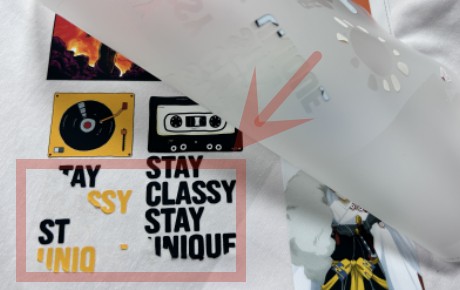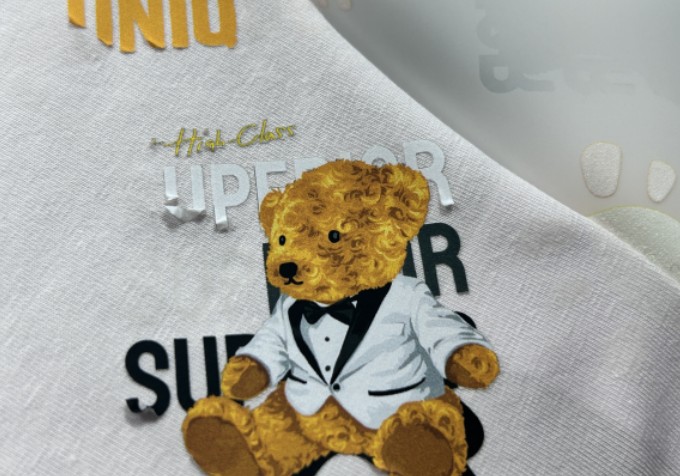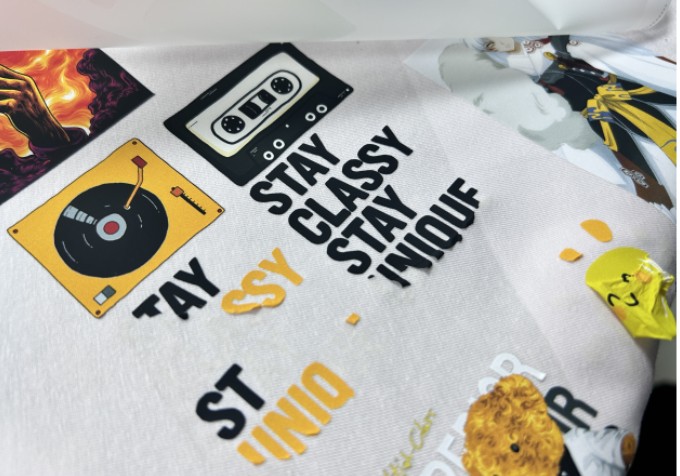DTF transfers have taken the printing world by storm. Unlike any other printing method, they last longer and remain vibrant even in extremely complex designs. Although it is popular for its high-quality output and adaptability. However, some users have complained that the DTF transfer paper cannot be pasted properly, resulting in unsatisfactory printing results and a waste of resources.

Those who rely on DTF transfers for professional or personal printing may find this issue inconvenient. DTF transfer non-stick can result in significant financial losses and lost time spent resolving the problem. This article will explore potential causes of adhesion failure and provide solutions to enable customers to print successfully. By understanding the cause of this problem and taking effective remedies, consumers can save time, money, and materials and obtain high-quality prints from DTF transfers.
Please read on!
We need to know what may be the reasons why dtf transfer is not sticky.
Here are 5 reasons:
1.Poor quality DTF powder or ink
2.Problems with The Base Material
3.Problem during the printing process
4.Inadequate pre-treatment of the substrate
5.Environment Issues
Next, I will explain the causes and solutions to the above problems.
Poor quality DTF powder or ink:
If you use low quality DTF powder or ink, the DTF transfer may not work well. The reason they don't stick well is that their particle size is uneven. If the powder is old and past their expiration date, they can also make the situation worse, resulting in poor print results.
Solution: Use quality products
To solve this problem,
- You should use high quality DTF powder and ink.
- Make sure to buy them from a reliable supplier and check the expiry date before use.
- Check your powder or ink regularly to make sure it is working well.
- If you find any products that are of poor quality or expired, replace them. Follow the manufacturer's instructions on how to store it longer.
Problems with The Base Material
DTF Transfer sticking problems can happen due to substrate related issues. The ability of various substrates to connect with DTF powder or ink might vary depending on their unique features. For instance, substrates with a rough or uneven surface could not bind well with the transfer, leading to poor adherence. Similar to substrate porosity, transfer adhesion may vary.

Problem during the printing process
DTF transfers can be tricky as things like temperature, humidity, pressure, and setup can affect how the transfer sticks. If it’s too cold or dry, the glue might not work properly. And if there isn’t enough pressure, the transfer won’t stick well to the surface.
Solution: Frequently Check The Printer
To fix these issues, you should follow the instructions from the manufacturer. They mention the right settings for different temperatures, humidity, pressure, and how long to let it dry.
You might need to optimize your printer by converting and doing some trials to get the best stick.
Inadequate pre-treatment of the substrate
DTF Transfer requires substrate pre-treatment to make the surface ink- or powder-receptive. If the substrate is not adequately pre-treated, it may not bind with the ink or powder, resulting in poor adherence.
Not applying enough adhesive, using the improper adhesive for the substrate, or not letting the glue cure before printing are frequent substrate pre-treatment concerns. Moreover, certain substrates can need more than one adhesive application or a different pre-treatment technique altogether.
To resolve this problem, prepare the substrate according to the manufacturer's instructions and clean and dry it before applying adhesive. It is critical to use the correct type and amount of adhesive for your chosen substrate. These methods enable users to pre-treat the substrate and apply DTF Transfer in the correct way.
Environment Issues
In addition, ambient temperature and air supply can also affect the performance of DTF Transfer. For example, when the weather is very hot, the sticky part will melt and not stick well. On the other hand, if the temperature is too cold, the parts may dry out excessively and not stick properly.
Solution: Creating The Ideal Environment
To make DTF Transfers stick well,
It’s wise to adjust the printing conditions.
The temperature should be right – not too high to avoid melting, and not too low to be drying.
Humidity matters too; too little can dry out the adhesive, while too much can make it watery.
Pressing with the required pressure during printing is important for the transfer to stick without problems.
Lastly, follow the manufacturer’s instructions for the curing time.
Transfer the stick properly before removing the backing roller.

Conclusion
DTF transmission sticking problem
DTF heat transfer is a high quality, long-lasting heat transfer option. In order to obtain the desired results, it is critical to ensure that the transfer material adheres adequately to the substrate. Users can optimize DTF transfer adhesion by pretreating the substrate, using high-quality DTF powder or ink, optimizing the printing process, selecting the appropriate substrate, and managing environmental conditions. DTF transfer can also be optimized by following appropriate pressing times, temperatures and pressures. You can determine the best settings for DTF transfer and substrate through testing.
TEXTEK's business covers many countries around the world, including emerging markets and mature markets. We have a complete sales system and are committed to using our professional knowledge and first-class service to help customers improve their digital printing business.
.jpg)



.jpg)
